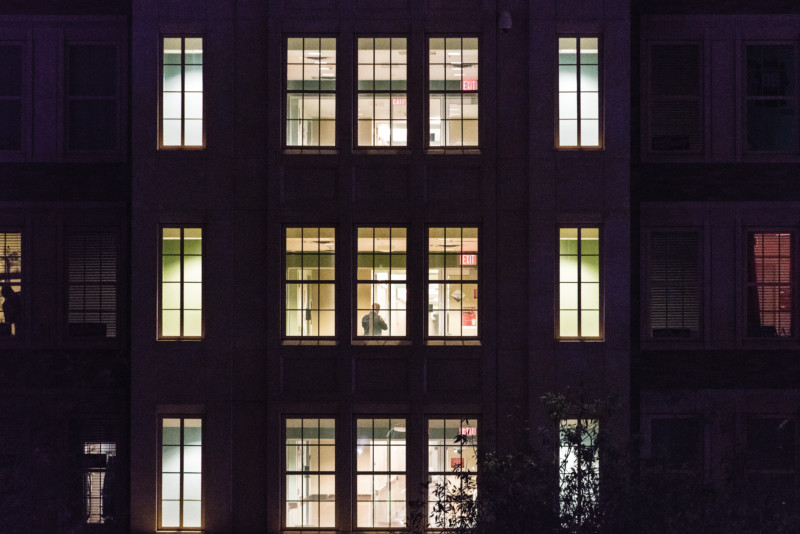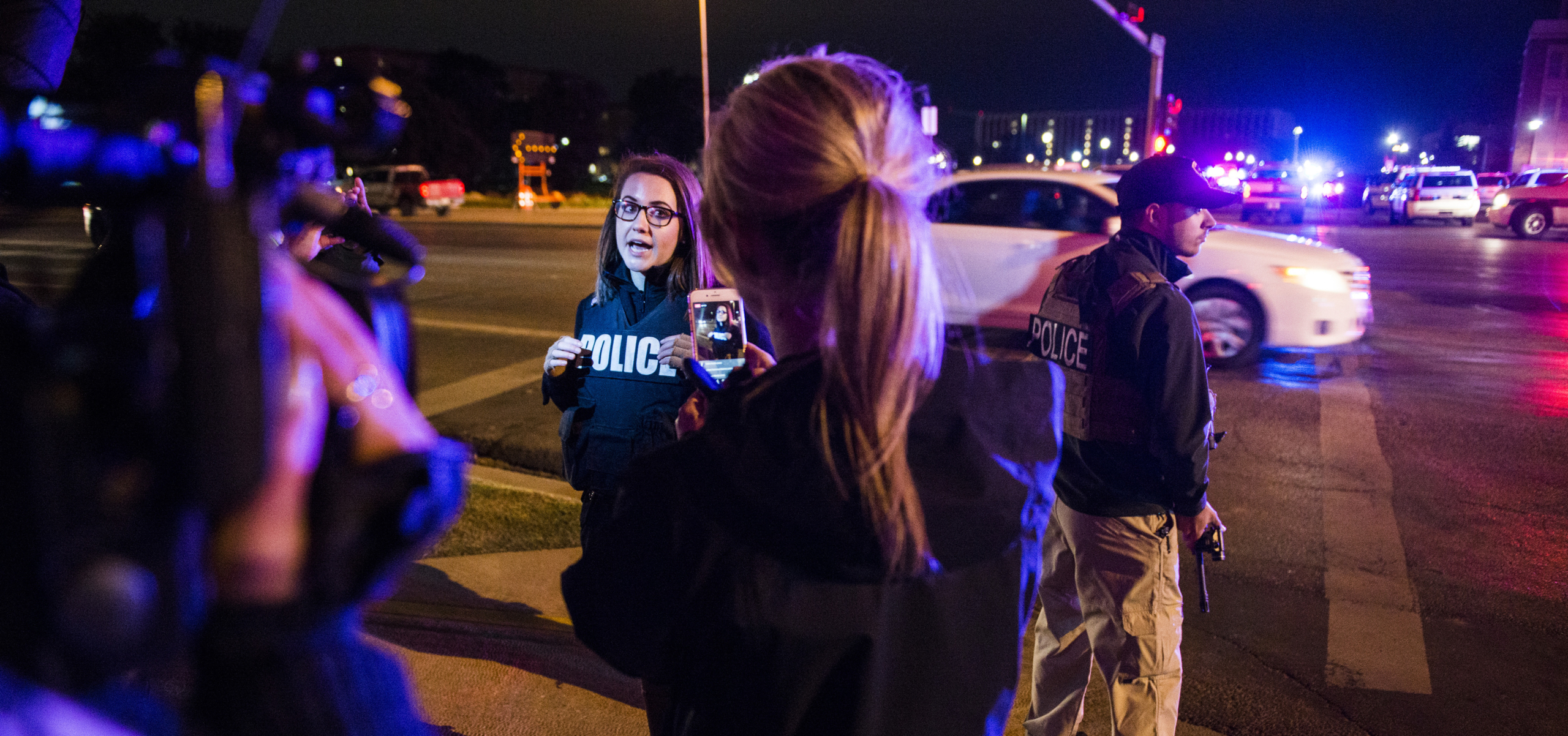On March 14, 2018, just hours after covering a student walkout against gun violence for Northwestern University’s The Daily Northwestern, photo editor Colin Boyle found himself with a new assignment on his hands. Local police were responding to a report of a gunman at a residence hall on the Evanston, Illinois, campus.
When Boyle arrived at the scene, he immediately began taking photos and interviewing officers. As news of the situation traveled and the campus went into lockdown, Boyle’s Twitter feed became the go-to source for worried parents and alumni, reporters in nearby Chicago, and students frustrated by what they felt was reticent communication from the university.
Evanston Police Department eventually concluded that the report was a hoax. Still, Boyle reflects on the chaos, pressures, and challenges of covering an active-shooter threat as it evolved. “There was a huge responsibility that I felt,” Boyle says. “I still am trying to process that to this day. It’s kind of a lot to consider.”
ICYMI: The real costs of Devon Nunes’s defamation lawsuit
The threat of an active shooter on campus confronts student journalists with a perfect storm: a young, sensitive audience already rattled by the specter of gun violence; an erosion of local newsrooms that has forced college publications to step in as papers of record; and a social-media economy that values speed and details, even at the expense of the truth. Compounding those pressures is the tension inherent to being a student reporter, asked to cover a community that is also your own.
“You really know a lot of these people and you want to give them the best information you can so they can be safe,” Ryan Wangman, who covered the gun scare as The Daily Northwestern’s city editor, says. “But you also want to be safe yourself and you want to make sure you’re being accurate.”
Faced with a clash between professional obligations and personal anxieties, some reporters feel they must suppress the latter. When Texas Tech alerted its students to an active shooter on campus in October, The Daily Toreador’s editor in chief McKenzi Morris felt she had no choice but to push her own fear aside. “We knew that if we let ourselves go there and let ourselves be freaked out and let ourselves be scared that there was no way we would get over that,” she says. She gathered with her fellow editors to acknowledge the gravity of the moment. “‘We paused, and I just told them, ‘I love y’all, please be safe. Do this job right, but don’t do it to the point that it’s going to get you hurt,’” she says. “And then we just went right back into work mode.”

A police officer covers the third-floor hallway in a Texas Tech building on October 9, 2017, following a shooting at the school. Photo by Dean Whitelaw/The Daily Toreador.
In situations like these, there isn’t much time to be scared, says Jordyn Hermani, who was editor in chief of Central Michigan University’s CM Life when a shooting took place in a dorm room last March, two weeks after the mass shooting in Parkland. Hermani texted her parents to let them know what was going on, and then blocked their phone numbers so she could concentrate on reporting.
“If you’re trying to fill too many roles at the same time, something is just logically going to fall through,” Hermani says. “I couldn’t be worrying about what my parents were thinking at the time of trying to also tell 20,000 other parents what’s going on.”
Even as campus publications provide authoritative reporting for their communities, the panic intrinsic to active-shooter events enables a social media rumor maelstrom that is almost impossible to manage. At Texas Tech, Morris remembers how quickly fabricated or misleading details of the suspect spread across Twitter. First, the shooter had fled campus in a white truck, then a gold car; they were wearing a shirt, then they weren’t wearing a shirt; there were multiple shooters, then multiple students had been shot. The staff of CM Life responded to incorrect student tweets with fact-checks, but Hermani likens the process to battling the Hydra, two new claims popping up for each one refuted. National news outlets now share student-journalist coverage and direct their audiences to college newsroom accounts, which Boyle says increases the pressure for student journalists to manage social media.
Faced with these pressures, student journalists can too quickly lose sight of their own mental wellbeing. “In the moment, it felt like this rush: ‘I have to get stuff done, I have to publish as much as I could and relay as much information,’” says Boyle. “But at the end of the day, we’re all humans, and I should have taken more time to process everything that was going on.”
A month and a half after the shooting at Texas Tech, Morris’s advisers staged a quasi-intervention for the four Daily Toreador staffers who had covered the incident. “It came to a point where it was affecting our classwork, it was affecting our relationships both in and outside of the newsroom,” Morris says. Encouraged to “talk it through and cry it out a little bit,” the group spent three hours one night opening up about what they had experienced and the toll it had taken. They reflected on their coverage—what they’d done well, what they might change—and finally articulated the emotions they had ignored for weeks.
“We didn’t realize how hard it was going to be for us. It’s hard covering this when it’s your campus because you do feel so closely connected to everything,” Morris says. “You have to take time and take care of yourself and realize, ‘It’s OK that it’s hard. It’s OK that you’re not OK.’”
Maitreyi Anantharaman is a writer and student living in Ann Arbor, Michigan.

